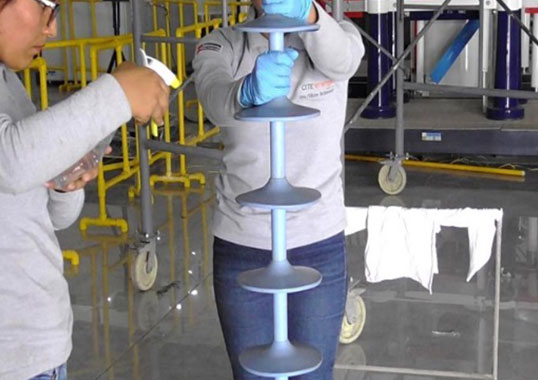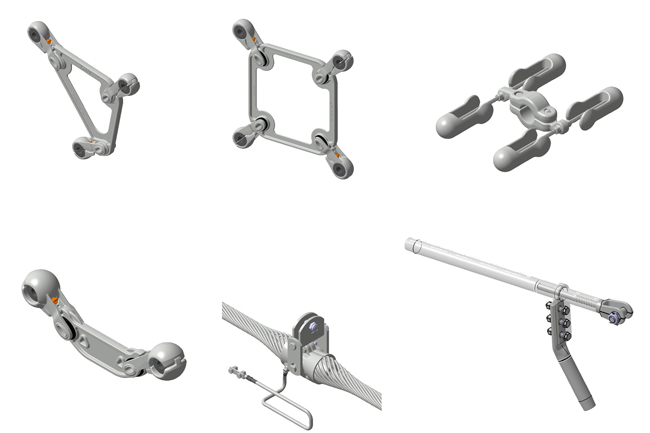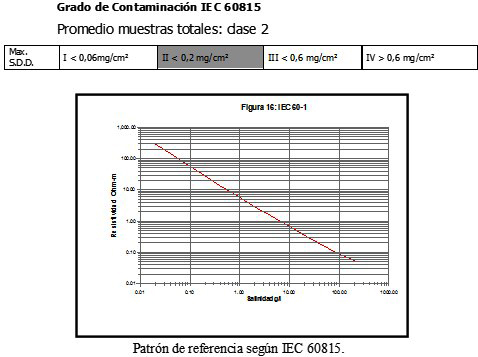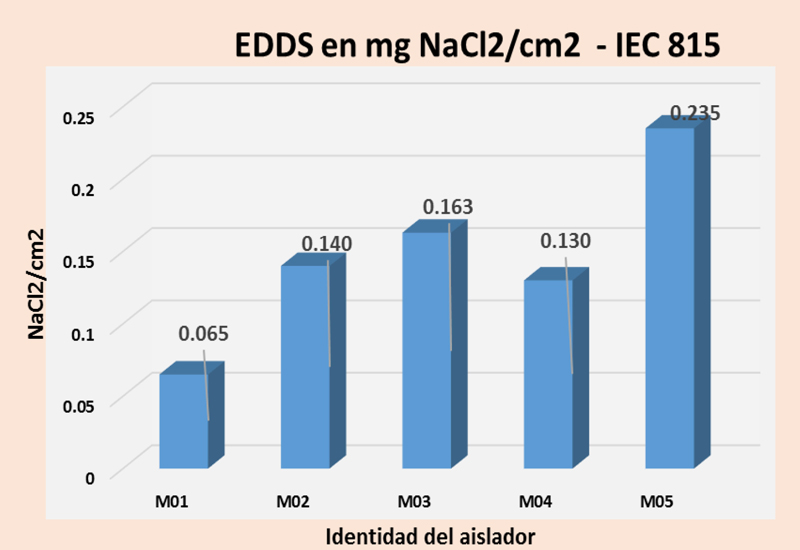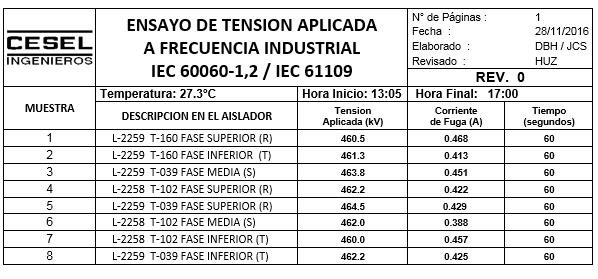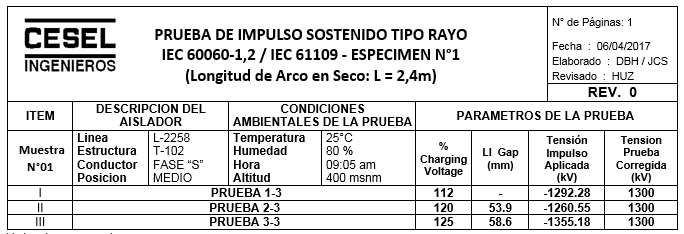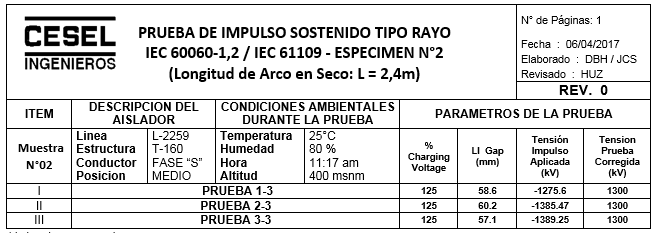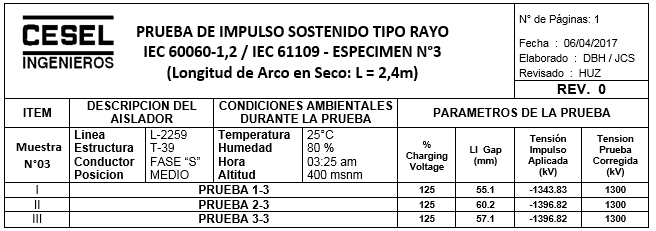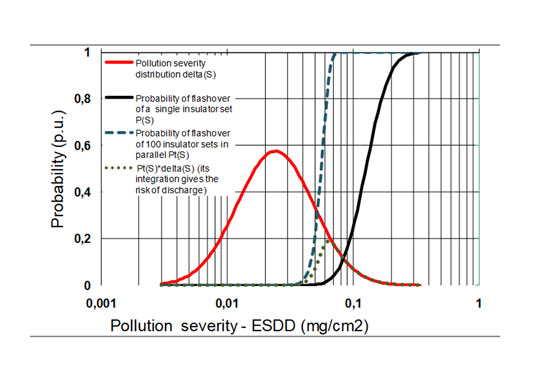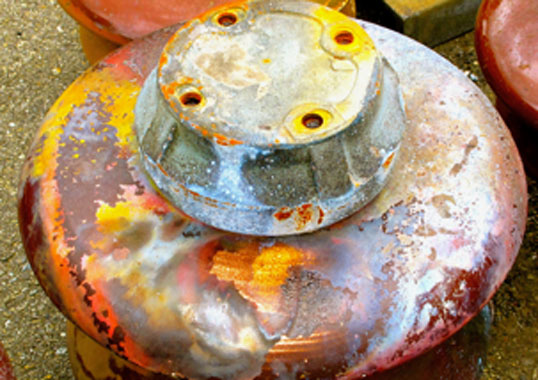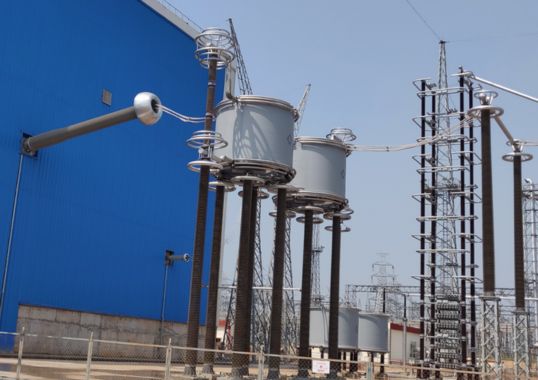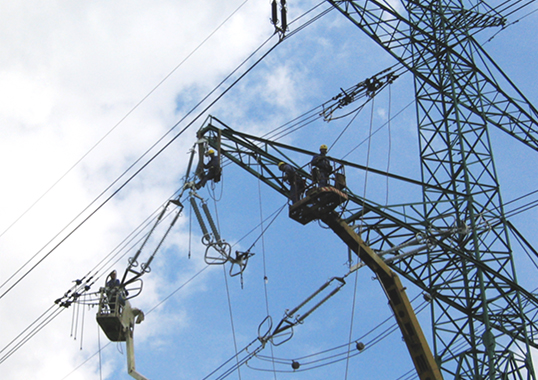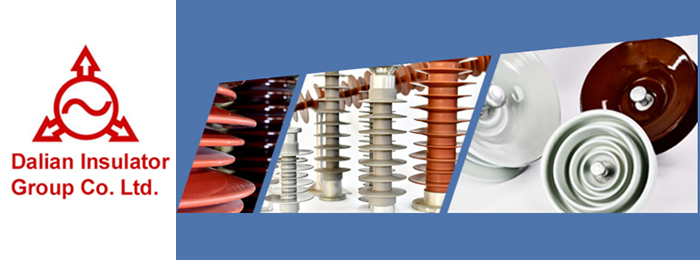Many transmission lines across the globe operate at high altitude under conditions of low air pressure and relatively thin air. It is well known that voltage decreases with altitude, whether air gap discharge voltage, conductor corona inception voltage or pollution flashover voltage. The higher the altitude, the more problematic this becomes for external insulation on lines and equipment. In China, for example, where over 60% of the land is at 1000 m or higher, research at specialized test facilities has found that insulator pollution flashover voltage at altitudes of 1000 m and 2000 m are reduced by 5.7% and 11.4% respectively, compared to sea level. Yet another consideration is whether higher sustained UV radiation causes degradation of the polymeric materials used in composite insulator housings.
Investigators in Peru conducted a laboratory test program to evaluate the condition of 15-year old polymeric insulators removed at random from a 220 kV line running at an average altitude of 4300 m. The research consisted of electrical, mechanical, pollution, hydrophobicity and accelerated ageing tests performed on sample insulators taken down from this line. Among the goals was to evaluate behavior of these insulators after sustained service at such high altitude and estimate useful remaining service life.
This edited 2017 contribution to INMR by César Augusto Moreno Cueva of Proyectos de Infraestructura del Peru, reviewed the findings.
Selection Criteria
A total of 9 test specimens were removed at random from conveniently accessed towers along the 220 kV L-2258 and L-2259 La Oroya-Paragsha Lines, operated by ISA-REP and running through in the central highlands of Peru.
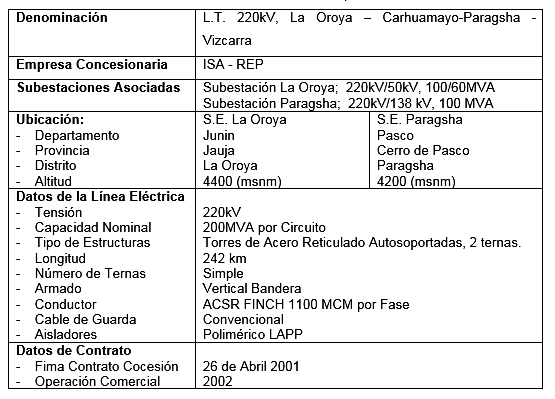
The insulators installed on this line had been supplied early in the 2000s and were selected based on specifications and tests according to IEC 61109.

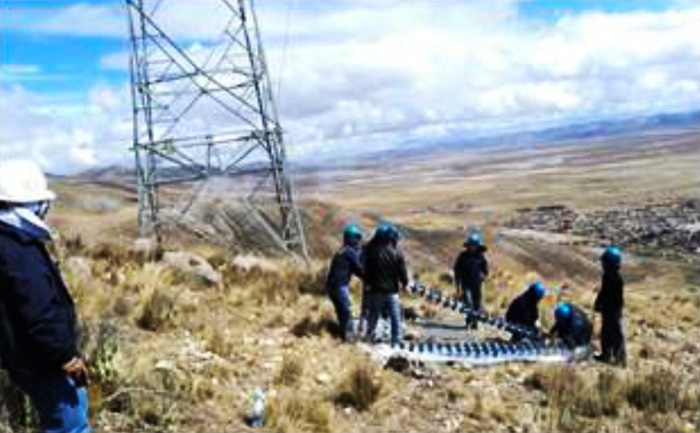
Laboratory Testing Program
The nine insulator specimens that comprised the test sample were carefully removed, handled, packed, transported to the CITE Energia and Delcrosa Laboratories for unpacking and preparation. The following tests were then performed on each:
1. UV accelerated ageing test;
2. Test of degree of contamination & acidity index;
3. Hydrophobicity test;
4. Test of voltage applied to industrial frequency;
5. Mechanical tensile tests;
6. Dry arc test;
7. Negative polarity impulse voltage test;
8. Inspection & evaluation of condition.
Table 3 shows the procedures set out in the following international technical standards and guidelines in the tests carried out.
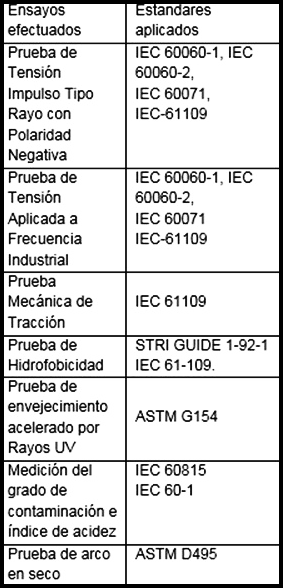
1. UV Accelerated Ageing (ASTM G 154)
This test simulated, in accelerated time, the damage that can occur after years of UV exposure and thereby helps verify the life expectancy of an insulator and its resistance to damage after years of service in areas higher than 4000 m. The test was performed in the UV Accelerated Ageing Chamber at CITE ENERGIA and involved the test specimen removed from Tower #160 (middle phase ‘S’) on L-2259. Test duration time was 1000 hours. No physical degradation, cracking or discoloration was found and there was no loss of flexibility observed on surfaces in spite of a slight loss of brightness. Since these polymeric insulators had been exposed to adverse environmental conditions for some 15 years, passing the ageing test and maintaining all their physical and chemical properties confirmed that they are still fit for normal operation.

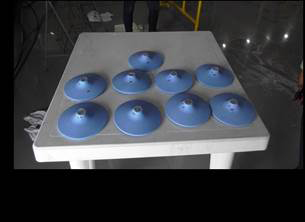
2. Contamination & Acidity (IEC 60815)
The objective of this test was to verify degree of contamination (ESDD) on each test specimen to serve as a reference for performance of the insulator. The result obtained was verified according to the criteria contained in IEC 60815.
Acidity level in the contamination extracted from the polymeric insulators was higher than neutral (i.e. pH> 7), suggesting that insulators were not at risk of deterioration due to acidity. Degree of accumulated contamination found on the test specimens was equivalent to a Class 2 service environment.
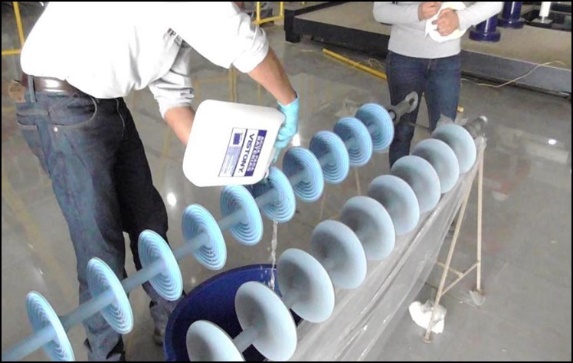
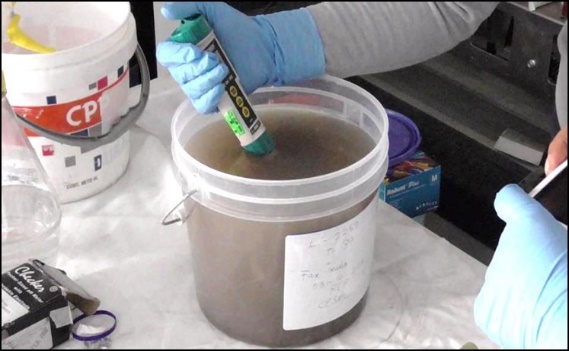
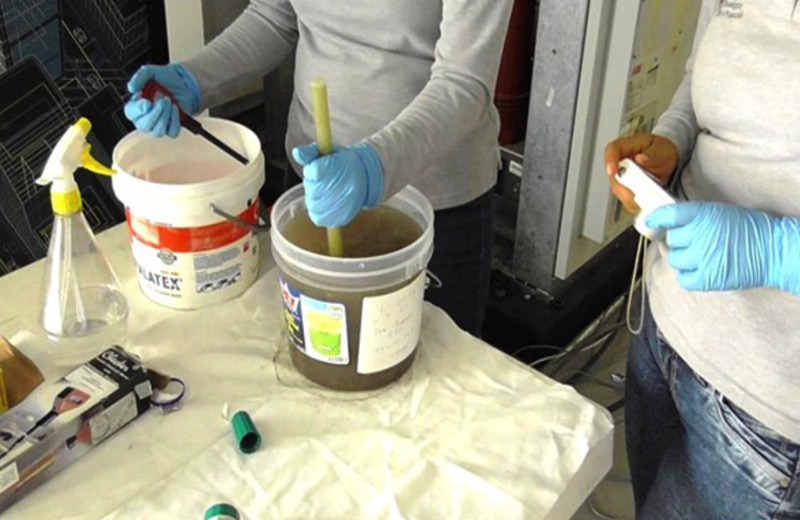
Although these polymeric insulators have been exposed to adverse environmental conditions for 15 years and at a height higher than 4000 m, loss of initial hydrophobicity was minimal.
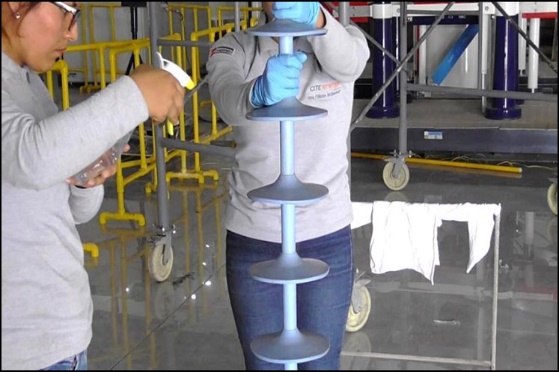
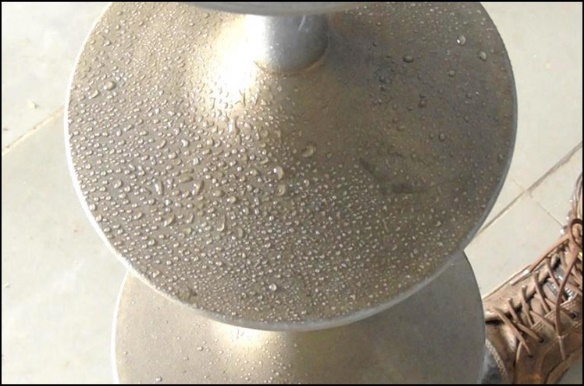
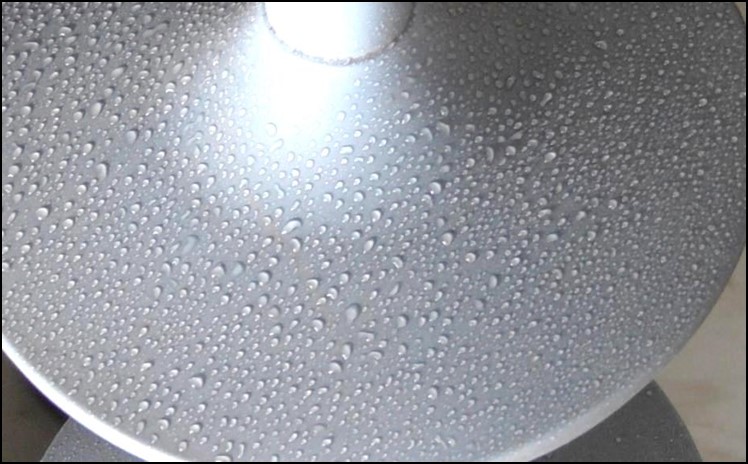
4. Electrical Testing (IEC 60060)
The objective of this test was to verify the basic insulation level at industrial frequency of the polymeric insulators in event of temporary overvoltage during the operation of the line. A standard applied voltage test was performed under dry conditions, with 60 s effective duration starting from the moment the 460 kV test voltage was reached.
Eight test specimens were tested in accordance with the technical data in their catalogue at 460 kV basic insulation level for one minute. The 500 kV nominal voltage resonant system in the laboratory supplied the required test voltage without partial discharge fluctuations at pure wave industrial frequency. No partial discharges were observed on any of the specimens during these individual tests and this verified that they could withstand this standardized voltage at low frequency.
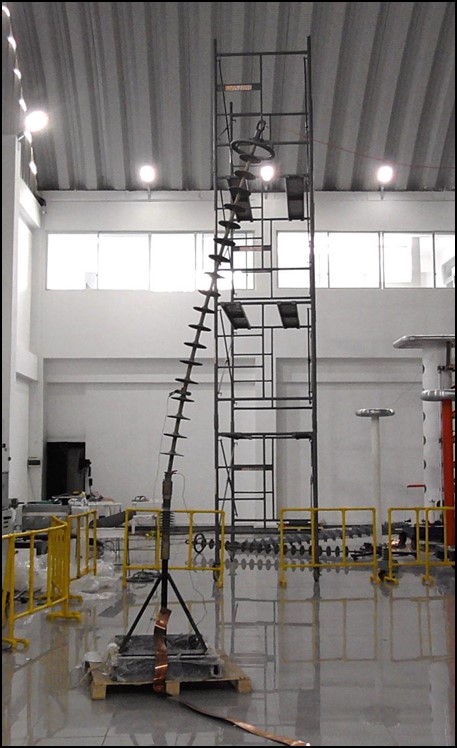
5. Mechanical Tensile Test (IEC 61109)
This test verifies the mechanical resistance limits of sample insulators subjected to a specified tensile stress. It determines how weathering or erosion events could have degraded the FRP core and/or hardware, under criteria of IEC 61109.
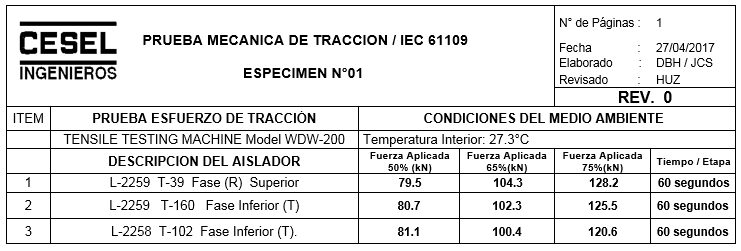
Tensile tests performed on 3 polymeric insulator specimens revealed that they were all able to support 75% of their mechanical tensile load (SML). After conducting these tests, visual inspection was performed on insulators and fittings and no signs of damage, abrasion, rupture or deformation were detected.
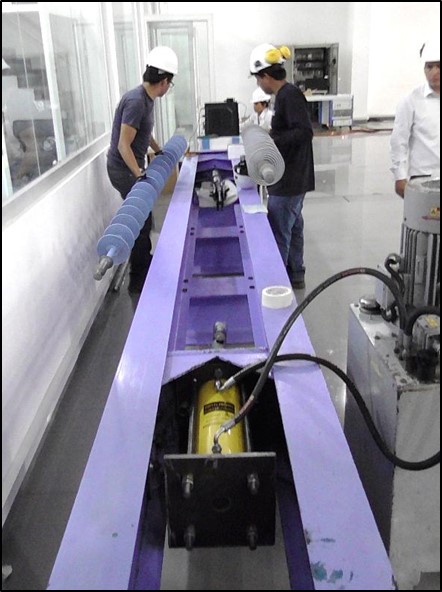
tensile test.
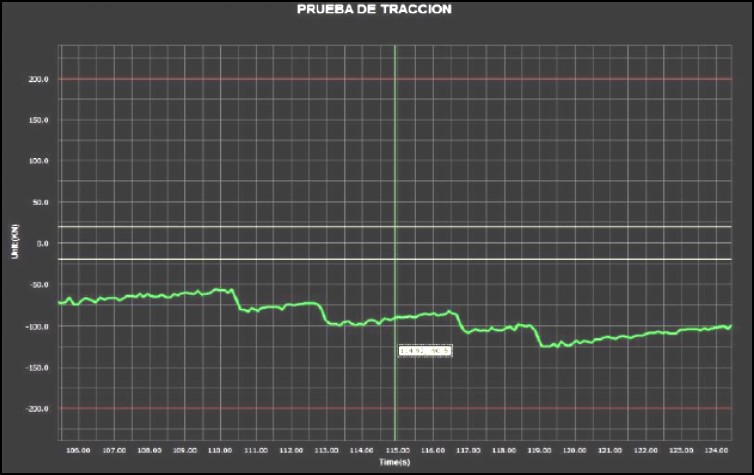
6. Dry Arc Test (ASTM D495)
This test is designed to determine an insulator material’s resistance to arcing due to leakage current, arc currents or atmospheric discharges. The standard used is ASTM D495, which specifies that, along a sample of the polymer material, two separate electrodes are connected at a distance of 6.5 mm. A voltage of 1000 V is then applied, initiating an arc that generates heat of the type that can produce superficial damage. Test residues can be black (carbonaceous) if the polymeric material is composed of organic bases such as EPDM, polyethylene, natural rubber or white if the base material is composed of a silicone base material. The result of the test confirmed that the polymeric material used in the test insulator specimens is silicone (silicone).
7. Negative Polarity Impulse (IEC 60 060-1 / 2)
The aim of this test is to verify that arcing distances in air resist a transient specified impulse type surge that could cause short-term disturbances. The non-disruptive impulse voltage test is performed with a voltage having a waveform of 1.2/50 μs, as specified in IEC 60060-1 / 2 and intended to simulate a lightning-type surge. This impulse test was performed at the Delcrosa Laboratory up to the limit of its impulse generator (1300 kV) for which, according to the standard, the test was performed on a partial insulator length of 2400 mm. The test requires a minimum of 3 pulses of negative polarity.
After the three tests of lightning impulse applied to each polymeric insulator, a 1300 kV negative impulse holding voltage was presented without contouring arc to satisfy compliance with standard environmental conditions. The value of compliance of the basic insulation level was extrapolated linearly to the total length of the polymeric insulators installed at altitudes greater than 4000 m. It was thus concluded that the impulse hold voltage for the respective insulator length was 1680 kV.
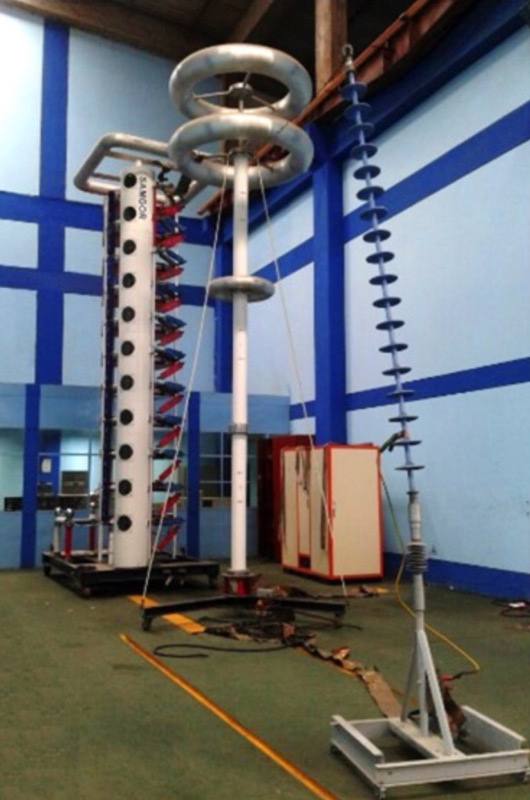
Summary of Test Results & Conclusions
Results obtained in various tests performed on a total of 9 randomly selected insulator specimens were all satisfactory and within acceptable parameters according to relevant international standards and technical guides. These polymeric insulators had been in continuous service for 15 years at an altitude of about 4000 m and subjected to adverse climatic conditions from sustained UV to ice to rainfall to high winds. Laboratory tests demonstrated conclusively that the condition of these sample insulators was good in terms of their dielectric and mechanical characteristics as well as the texture and hydrophobicity of the polymeric materials, which remained similar to that of a new insulator.
Insulators installed on the 220 kV La Oroya-Carhuamayo-Paragsha-Vizcarra lines belonging to Peru’s ISA Business Group have been determined to comply with strict quality standards for polymeric insulators used on transmission lines. The ISA Group’s specifications for polymeric insulators require high temperature vulcanized (HTV) silicone material that provides sustained hydrophobicity to prevent pollution flashovers and that reduces leakage distance compared what would be needed for ceramic equivalents. In addition, this polymeric material has been found to be resistant to tracking to assure long life and stability, even under adverse environmental conditions.
The core rods are made of brittle fracture resistant ECR glass and the interface between core and rubber housing has an optimum seal to prevent moisture penetration and partial discharges. The results of laboratory tests validate the quality of these silicone insulators.
Finally, based on results of these tests, it was concluded that the service life of polymeric insulators installed on ISA Peru lines has so far not been adversely affected. This in spite of being in-service for 15 years under adverse weather conditions and at altitudes higher than 4000 m. Nevertheless, it is recommended that similar tests be conducted at intervals of from 5 to 10 years to further validate behavior of these polymeric insulators under such conditions. The polymeric insulators that are presently in operation on transmission lines of ISA Peru are deemed to have high probability to continue continuous service, with an expectation of a total useful service life of over 25 years.

